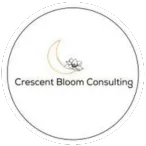Our Authors
Richard Wagner
CEO at Raven Health
With nearly 20 years of healthcare experience, Richard Wagner has spent his entire career advocating for healthcare providers and patients. As CEO and cofounder of Raven Health, Richard is guided by our mission to build the best, easiest to use all-in-one software platform in ABA therapy.


Beth Sullivan
VP Operations, Raven Health
As Vice President of Customer Operations at Raven Health, Beth Sullivan has played a key role in addressing the critical need for billing solutions in the ABA space. Leveraging her extensive expertise in healthcare management and billing operations, Beth has enhanced customer experiences, optimized workflows, and expanded Raven’s capabilities to better support providers.
Before joining Raven, Beth served as AVP of Business Operations and Programs at Inovalon, Raven’s partnered clearinghouse for billing, where she led initiatives that improved efficiency and drove growth within the Payer relations space.
Tim Crilly
SVP Strategic Partnerships, Raven Health
Tim has worked in the ABA field for 20 years and became a BCBA in 2011. Tim has worked for two national ABA companies in many capacities from both a clinical and operations perspective. Tim served as the Director of Clinical Autism Services for Magellan Health, where he oversaw a team of care managers responsible for reviewing and authorizing ABA therapy. In this role, Tim was involved in policy development, network development, and external partnerships. Tim currently works as the SVP of Strategic Partnerships at Raven Health. Tim brings his unique experience of having worked on both sides of the industry to this session.


Christina Ciccone
Marketing Manager, Raven Health
Mary Kate Garcia
Special Education Teacher, Autism Specialist


Kelli Fawver
Client Engagement Manager, Raven Health
Here are just some of the organizations that use Raven Health every day...











